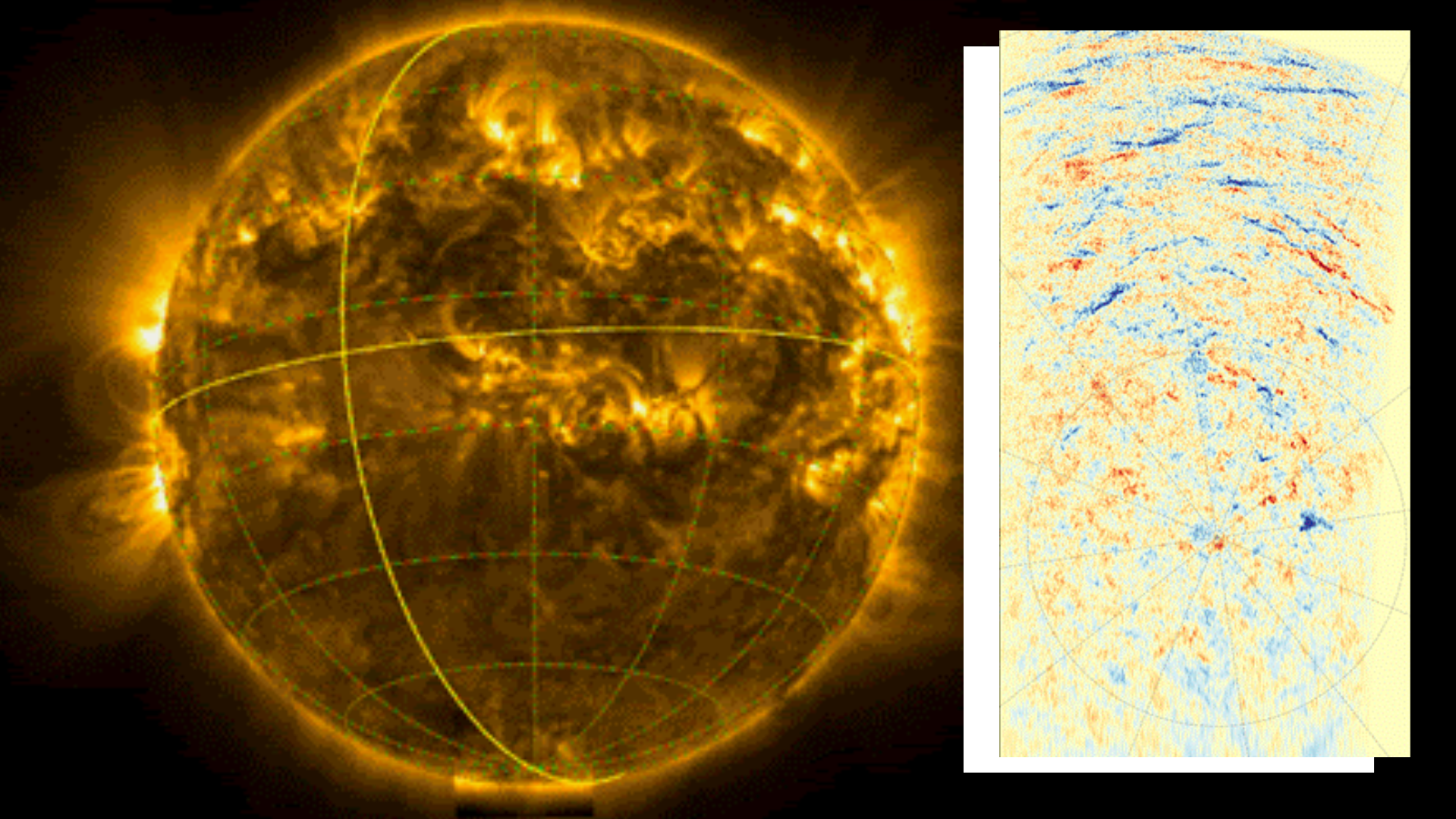Mars hides behind the Full Wolf Moon in gorgeous photos from around the world
The Red Planet adorably peeks out in these stunning views of the Full Wolf Moon.
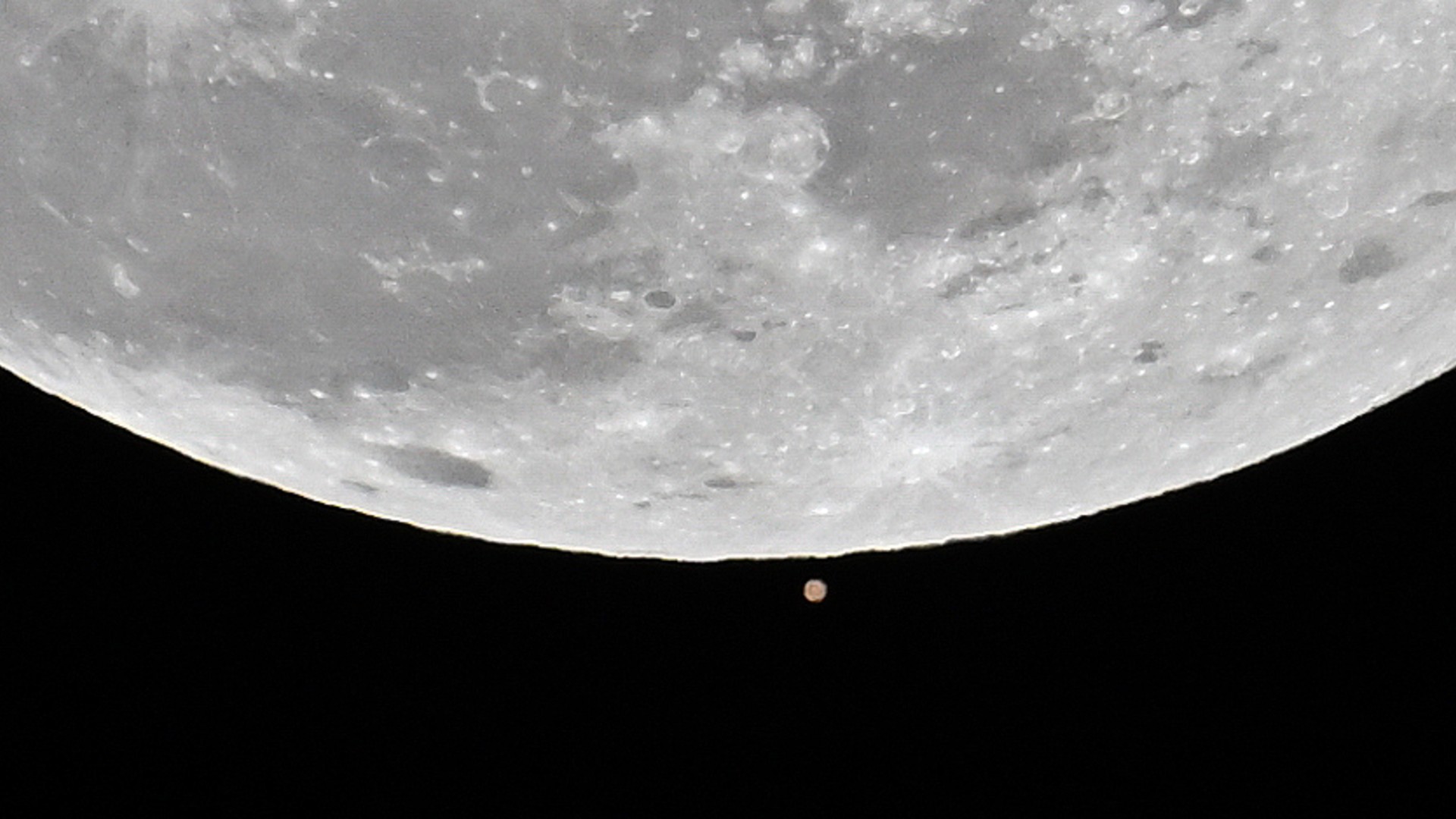
The moon performed a cosmic ballet with Mars this week.
On Monday evening (Jan. 13), the Full Wolf Moon passed in front of Mars in what's known as a lunar occultation, during which another celestial object appears to disappear behind the moon from our vantage point on Earth. Mars is approaching opposition on Wednesday (Jan. 15), the moment when it is situated directly opposite the sun as seen from Earth, which means it's at its brightest in our night sky right now. Additionally, Mars recently passed perigee on Jan. 12, its closest point to Earth in its orbit around the sun, which makes it slightly larger in the sky.
The result? A stunning lunar occultation of Mars that was seen by large parts of North America and western Africa. Luckily, plenty of skywatchers, photographers and Space.com readers caught the spectacle on camera in the gorgeous photos below.
Photographer Peter Jay caught the Red Planet lurking just above the northern limb of the moon as seen from Charlotte, North Carolina.
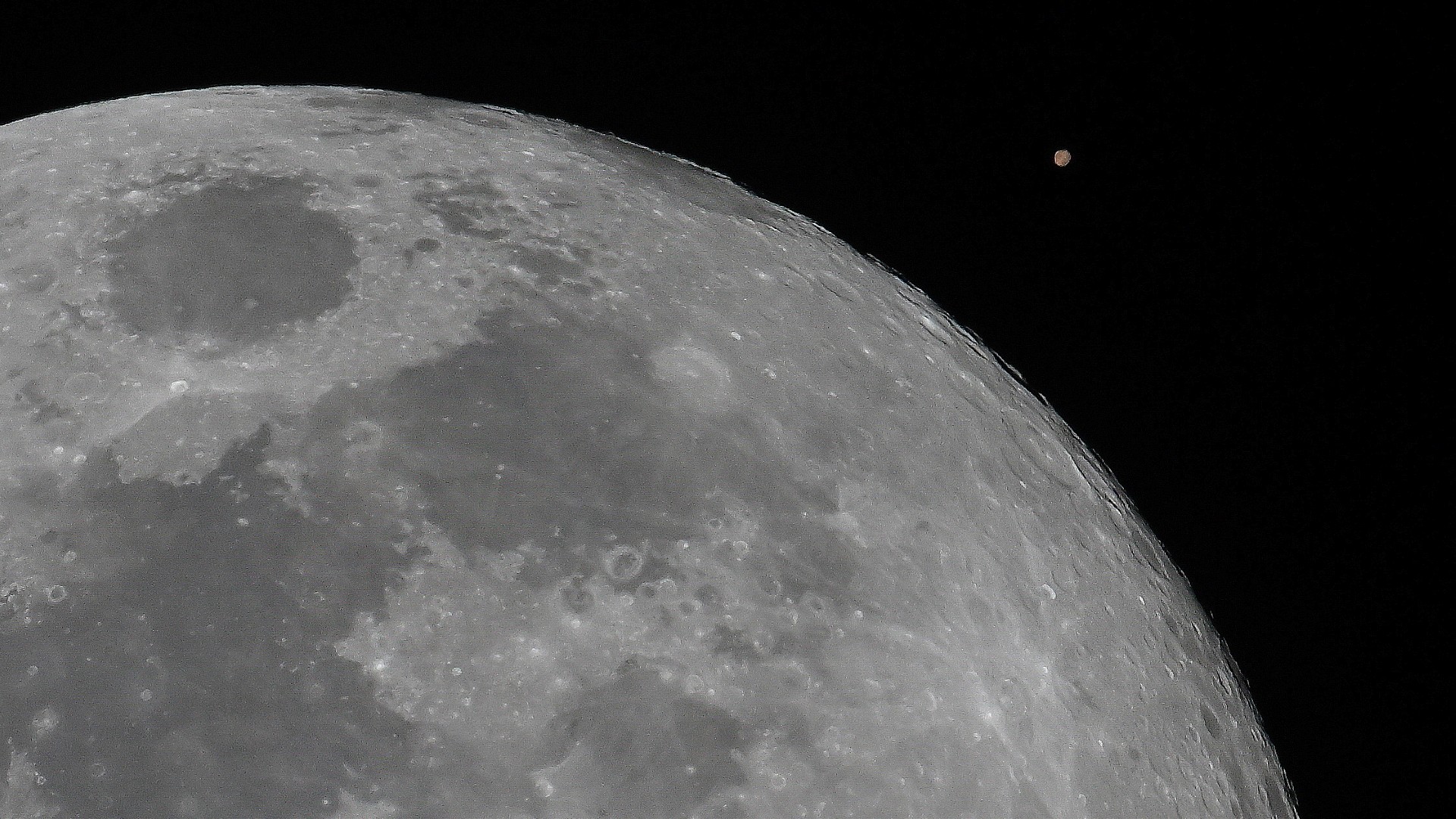
Jay caught the lunar occultation of Mars at several different points throughout the event, which lasted for just under an hour as the Red Planet passed behind the moon before reappearing again on the other side.
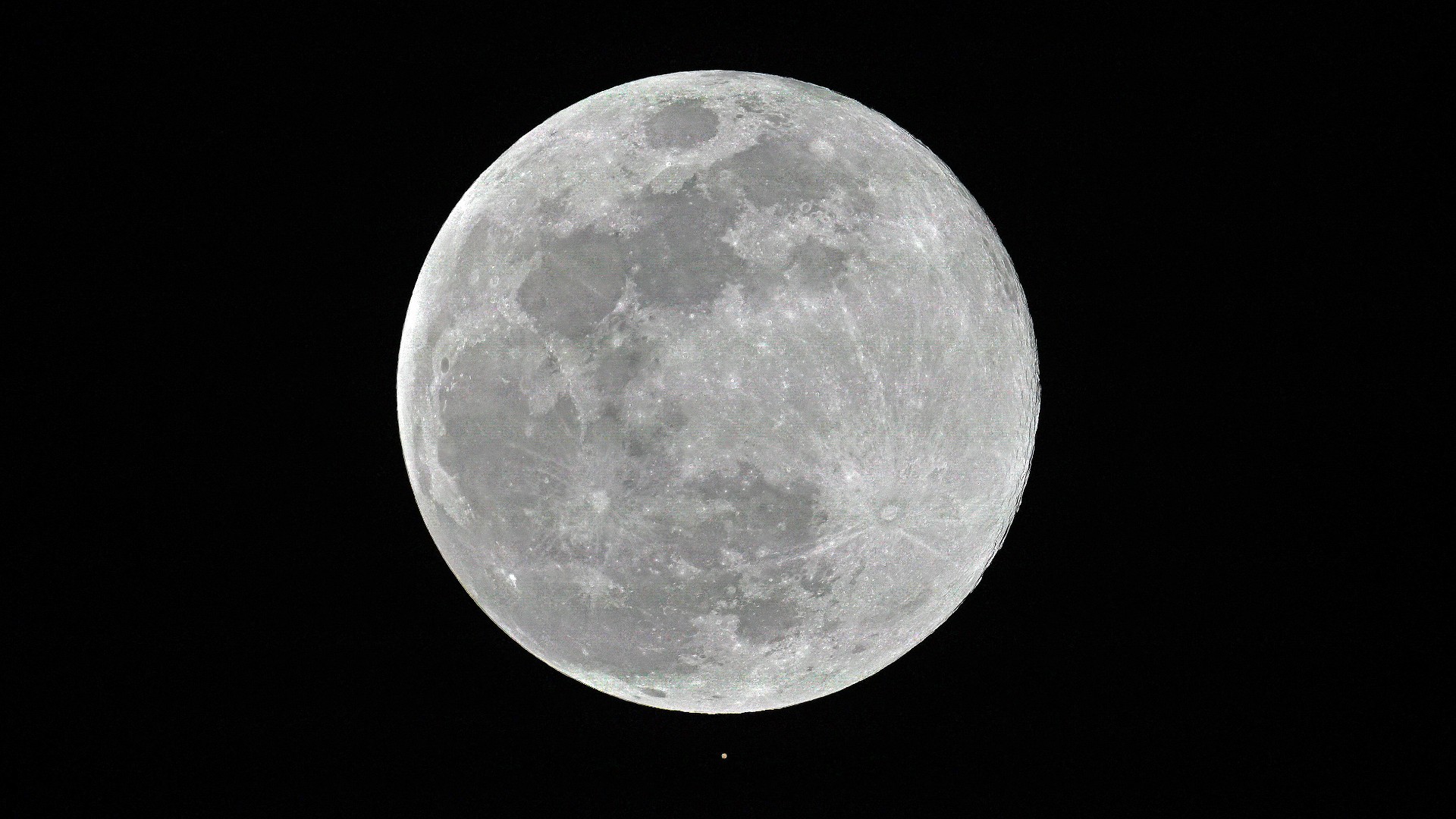
Lisa Shislowski of Plantation, Florida sent us the image of the occultation below.
"This evening was filled with so many exciting things happening with the first full moon of 2025/Wolf Moon and the lunar occultation of Mars 2025," Shislowski told Space.com via email.
Get the Space.com Newsletter
Breaking space news, the latest updates on rocket launches, skywatching events and more!
"The city view from Vista View Park in Davie, Broward County, Florida, gave way to a clear shot of the Wolf Moon rising through the clouds on the horizon. It was more vibrant and bright as it continued to rise. A little later in the evening, the lunar occultation of Mars was getting closer to occurring, and the tiny dot was the incredible planet of Mars that had just peeked right beside the Wolf Moon."
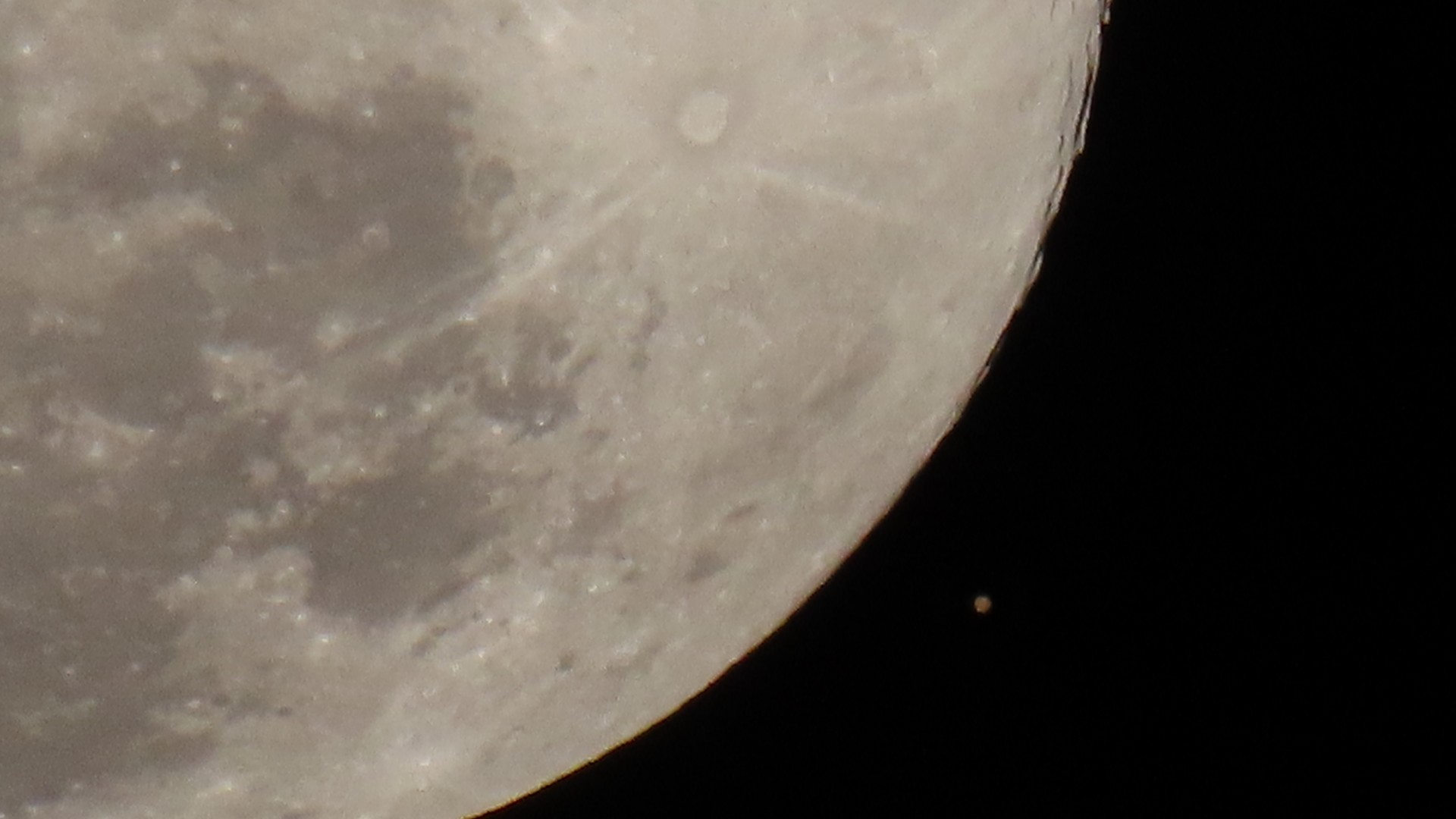
Josh Dagenais photographed the moon and Mars from Hanover Park, Illinois.
"This was a shot from my driveway. I was really excited to start seeing Mars hours before it was crossing paths tonight. Biggest challenge was staying warm as it was 13F (-10C). First time seeing something like this, and a first for shooting it too," Dagenais told Space.com via email. "Lucked out on viewing conditions, looking forward to the eclipse in March,"
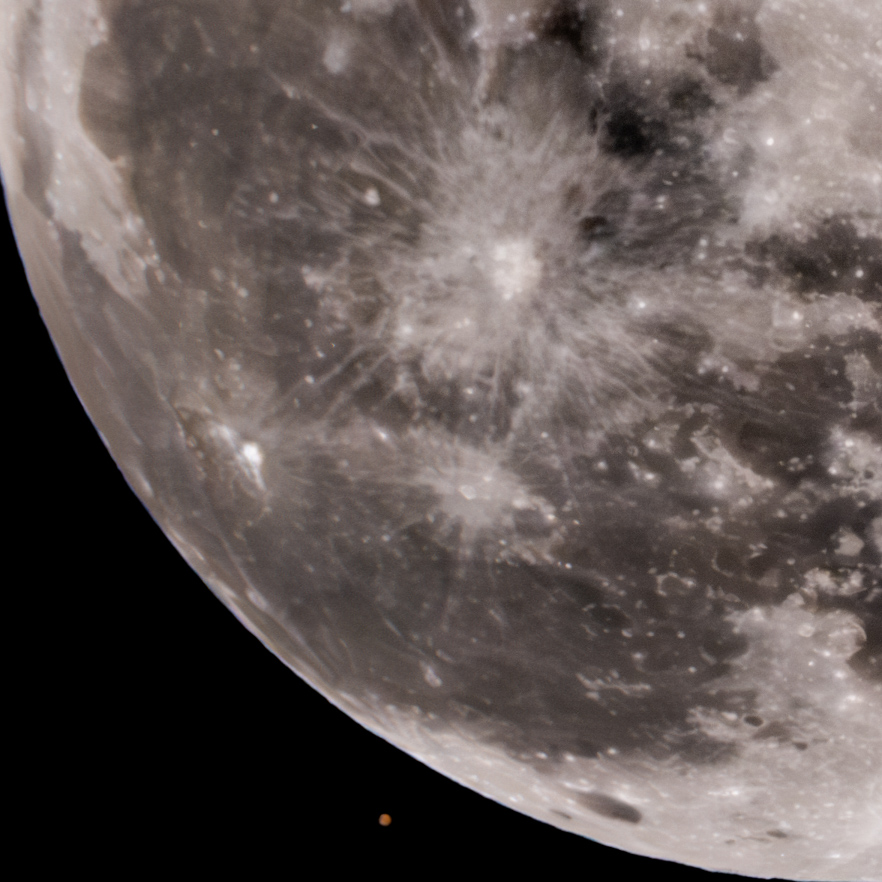
Reader Michael Tyo caught the occultation of Mars underway from Marlboro, Massachusetts using an 800mm prime lens and Canon R7 body.
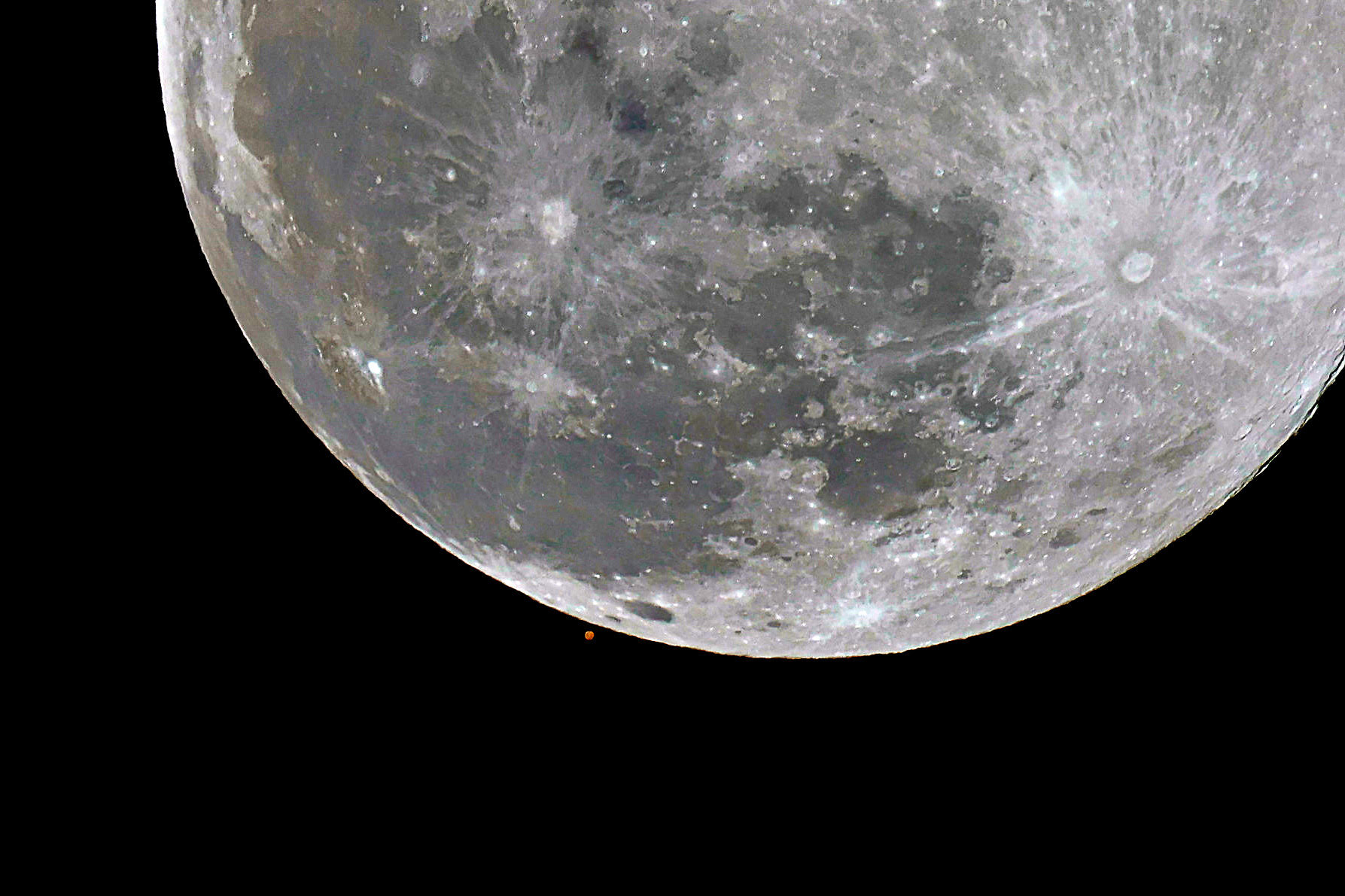
David J. Kim saw Mars peeking from behind the moon from Newtown, Pennsylvania.
Kim shot the scene with a Fuji X-T5 and Fujinon XF 150-600mm lens, captured at f8/600mm and f11/840mm with 1.4x TC.
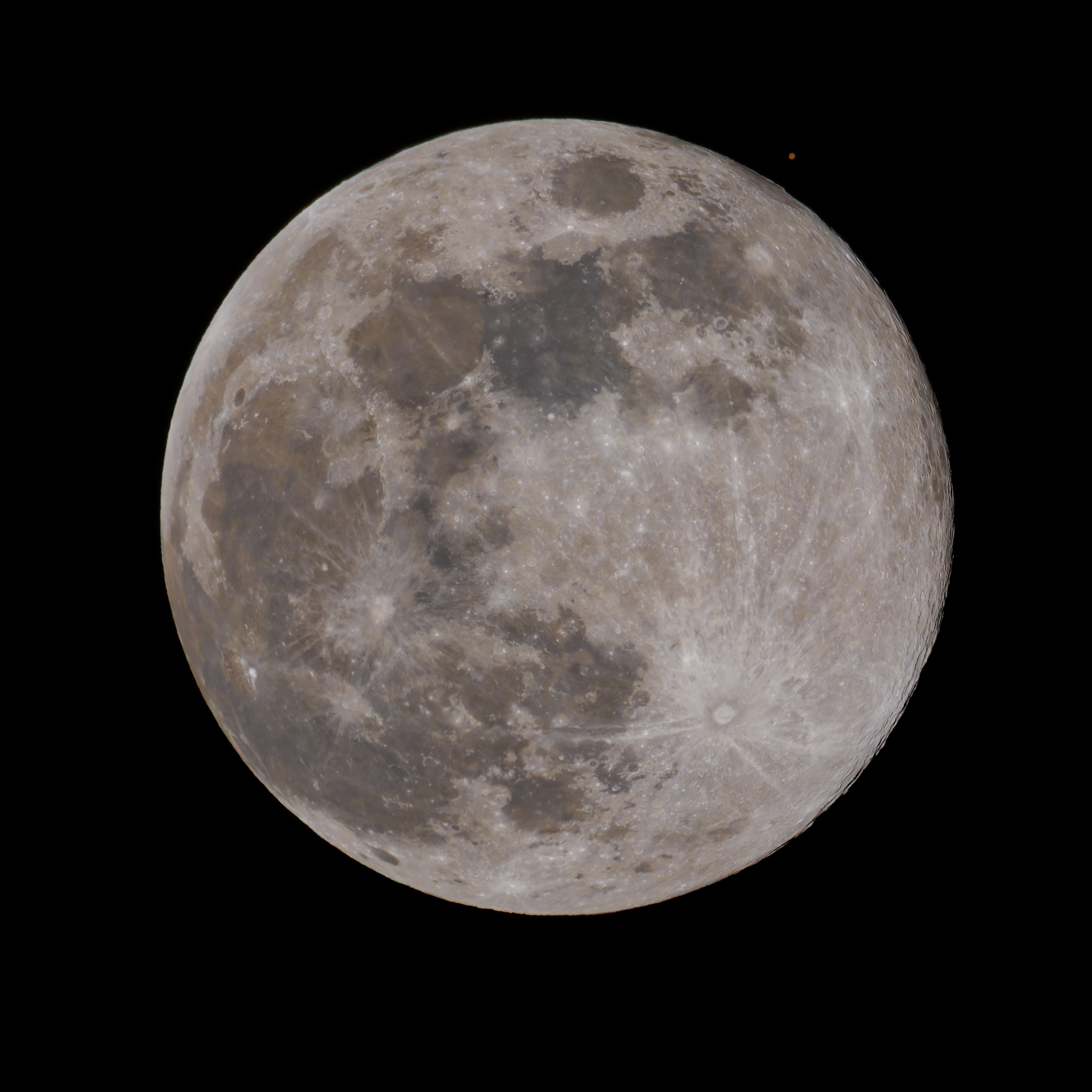
Other photographers outside of the viewing area of the lunar occultation of Mars caught the full moon shining alone in the night sky.
Robbie Pesiwarissa of Sydney, Australia saw the Full Wolf Moon appearing massive in the sky above Sydney Airport thanks to the moon illusion.
"As the twilight deepened, the Qantas Jet gracefully ascended from Sydney Airport in Mascot, while the mesmerizing Wolf Moon rose above the iconic buildings of the University of New South Wales (UNSW). The evening was warm and humid, a typical summer's embrace that lent a certain magic to the air," Pesiwarissa wrote via email.
"With only a fleeting few minutes at my disposal, I seized the opportunity to capture the moon in all its ethereal beauty while it lingered near the horizon. Alas, the clouds soon gathered, casting their veil over the moon, obscuring it from sight."
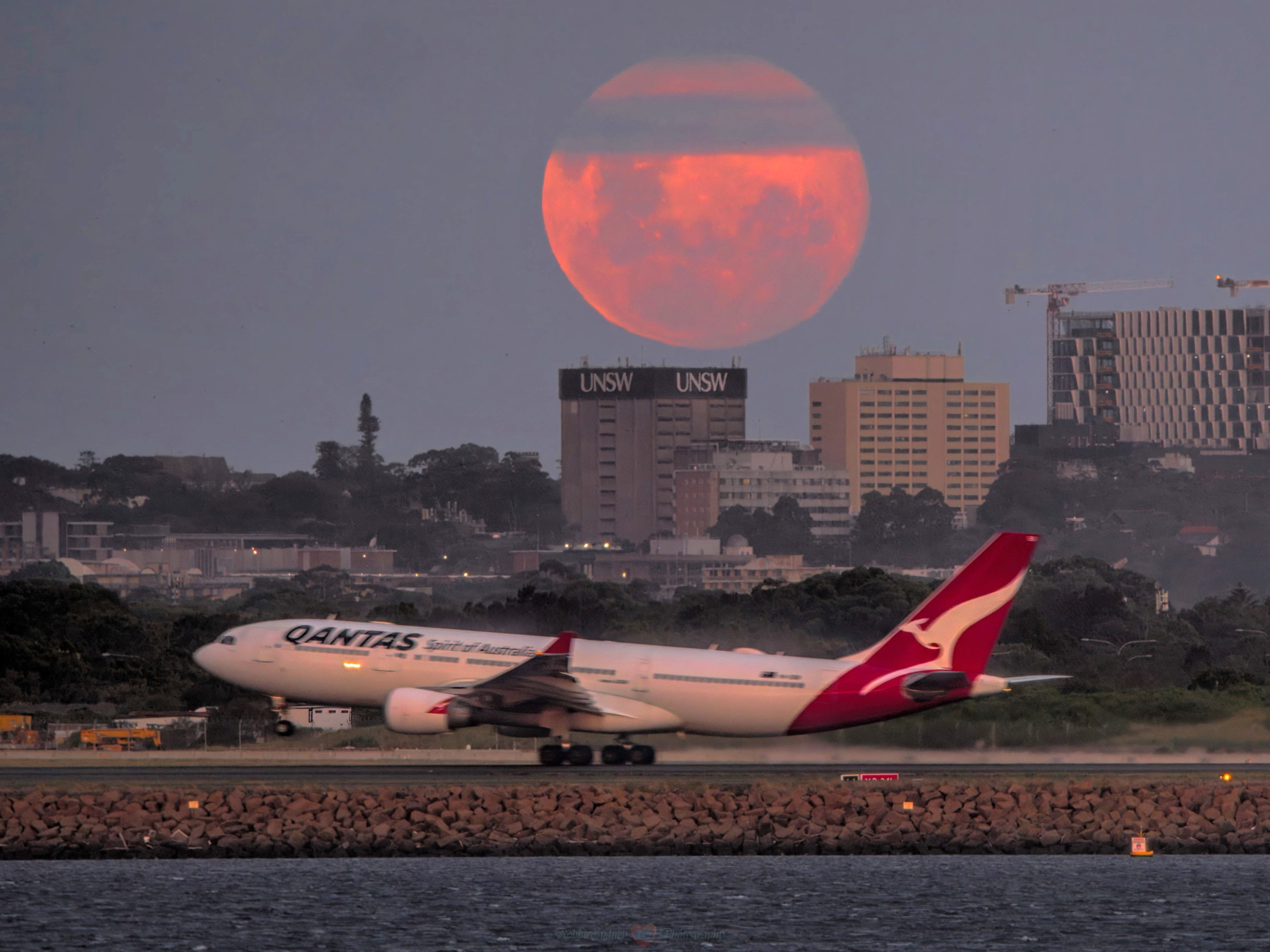
Photographer Yasuyoshi Chiba saw the full moon shining brightly above South Korean flags in Seoul.

Storied NASA photographer Bill Ingalls saw the Full Wolf Moon rising above the Lincoln Memorial and Memorial Bridge on Monday (Jan. 13) from Arlington, Virginia near NASA headquarters in Washington.

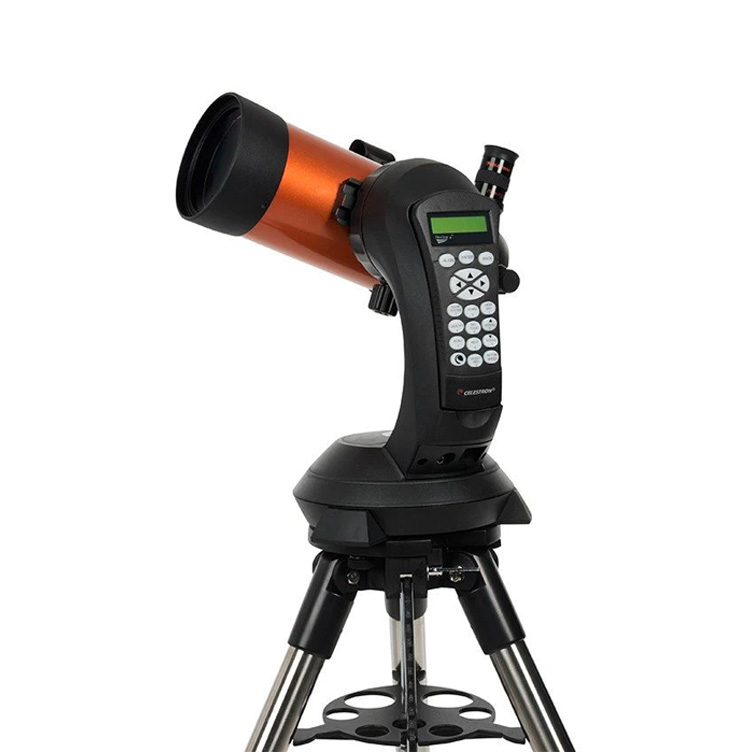
Want to see the features of the moon up close? The Celestron NexStar 4SE is ideal for beginners wanting quality, reliable and quick views of celestial objects. For a more in-depth look at our Celestron NexStar 4SE review.
If you're looking for binoculars or a telescope to observe Mars or the moon, our guides for the best binoculars and the best telescopes can help you find what you need. Be sure to also check out our guides for tips on how to photograph the planets ahead of Mars reaching opposition this week.
Editor's Note: If you snap a good photo of Mars and would like to share it with Space.com's readers, send your photo(s), comments, and your name and location to spacephotos@space.com.
Join our Space Forums to keep talking space on the latest missions, night sky and more! And if you have a news tip, correction or comment, let us know at: community@space.com.

Brett is curious about emerging aerospace technologies, alternative launch concepts, military space developments and uncrewed aircraft systems. Brett's work has appeared on Scientific American, The War Zone, Popular Science, the History Channel, Science Discovery and more. Brett has English degrees from Clemson University and the University of North Carolina at Charlotte. In his free time, Brett enjoys skywatching throughout the dark skies of the Appalachian mountains.
-
rod I enjoyed this celestial show last night. Out with my 90-mm refractor telescope using TeleVue 14-mm Delos and 10x50 binoculars. 2015-2240 EST, snow and ice all around too with Full Moon light everywhere, quite lovely sight. At 71x, some of the photos in the report look very similar to my eyepiece views with a bit more than 1-degree true FOV. Temps -2C/-3C and the wood burning stove running, sure felt good when I came back inside :) Mars disappeared near 2116 EST by my flip cell phone time and reappeared near 2231 EST. Excellent clear skies and cold for me last night that allowed great views.Reply
Edit, I did use a #17 polarizer filter to help reduce glare and brightness of the Full Moon. Full Moon 13-Jan-2025 2227 UT. Some slight surface detail visible on Mars too with angular size some 14.5 or so arcsecond.
